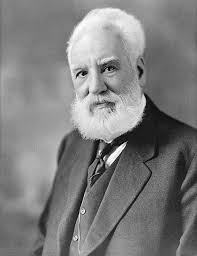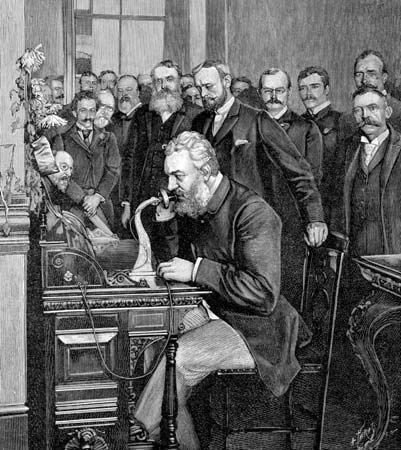
Do you remember that old Verizon commercial where the spokesman would ask the question, “Can you hear me now? Good.” Well, that tagline wouldn’t have been possible if it wasn’t for Alexander Graham Bell’s invention of the telephone.
It was on this day in 1876 that Bell received a United States patent for his revolutionary new invention.
Every invention has a story and today we’re sharing Bell’s! Growing up, Bell worked with his father in London, where Bell’s father developed Visible Speech, a written system used to teach speaking to the deaf.
This was just the first glimpse of innovation that gleamed through in Bell’s life. During the 1870s, the Bells uprooted their family and moved to Boston, Massachusetts. It was here that Alexander became very interested in exploring the possibility of transmitting speech via wires. It was a curious innovation that left him hungry to find a viable solution – after all, in 1843, Samuel F.B Morse’s invention of the telegraph made communication almost instantaneous between two locations both far and wide.
The only hiccup of the telegraph was that it still required that hand-delivered messages be sent between telegraph stations and recipients; not to mention, only one message could be transmitted at a time.

It was this problem that Bell set out to fix and fix it is exactly what he did when he created the “harmonic telegraph.” This device combined features of a telegraph and record player to give people the ability to speak to one another from a distance.
Bell didn’t work alone as he employed the help of Thomas A. Watson, a Boston machine shop employee that helped him develop a working prototype.
The first iteration of their invention of the telephone worked a little something like this. Sound waves created an electric current that varied in both intensity and frequency, which caused a thin, soft iron plate (a diaphragm) to vibrate. These vibrations were then magnetically transferred to another wire that was connected to a diaphragm in another, distant instrument.
When the diaphragm vibrated, the original sound was replicated in the ear of the receiving instrument.
Believe it or not, Bell filed his patent a mere two hours prior to Elisha Gray, who had a similar claim. That was a close one! Just three days after filing, Bell’s invention carried its first clear message, “Mr. Watson, come here, I need you,” a message that was sent from Bell to his assistant.
The story doesn’t end there. In fact, that’s where it begins. Gray was then employed by the Western Union Telegraph Company and worked alongside fellow inventor, Thomas A. Edison to invent their own telephone technology.
Bell wasn’t too happy with this idea, so he sued and the case made its way to the United States Supreme Court, where Bell’s patent rights were upheld.
Copyright Davison, 2016
Sources:
http://www.history.com/this-day-in-history/alexander-graham-bell-patents-the-telephone
http://www.history.com/topics/inventions/alexander-graham-bell
Images:
https://pixabay.com/static/uploads/photo/2014/07/26/06/48/alexander-graham-bell-402095_640.jpg
http://media-2.web.britannica.com/eb-media/84/115184-004-9C9C534F.jpg